Function Keys (FN) in Excel are valuable shortcuts that streamline your workflow and enhance productivity. By mastering these keys, you can execute commands, access features, and navigate spreadsheets with ease. Whether you’re formatting cells, inserting functions, or switching between worksheets, Function Keys (FN) in Excel offer a convenient way to perform common tasks more efficiently. Embrace these shortcuts to speed up your work, reduce repetitive actions, and unlock the full potential of Excel. With Function Keys (FN) in Excel, you can work smarter, not harder, and accomplish more in less time. Incorporate these shortcuts into your Excel repertoire to become a more proficient user and optimize your spreadsheet experience for maximum efficiency.
This Tutorial Covers:
- Use of FN keys in excel
- F1 Key
- F2 Key
- F3 Key
- F4 Key
- F5 Key
- F6 Key
- F7 Key
- F8 Key
- F9 Key
- F10 Key
- F11 Key
- F12 Ke
1. Use of FN keys in excel
Excel function keys (FN keys) can be used for a variety of tasks. It’s useful to learn some things, but not everything. Some work on their own, while others perform better when combined with Ctrl, Alt, Shift, or any combination of those keys. Let’s examine the functions of each of the Excel function keys.
F1 Key:
Here are multiple functions associated with the F1 key in Excel.
Pressing F1 opens up the Excel Help task pane, where you can search for information or assistance related to the software.
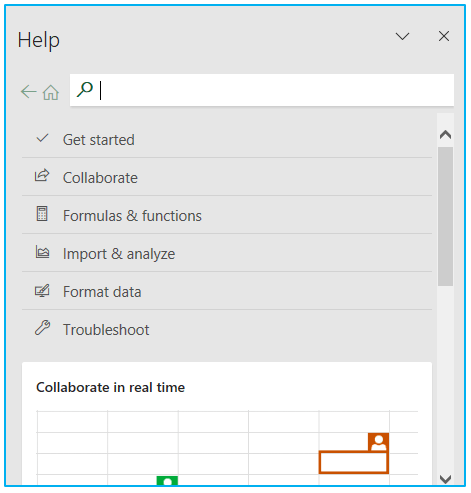
Additionally, pressing Ctrl+F1 toggles the visibility of the ribbon, which is the strip of tabs and icons located at the top of the Excel window. This can be useful when you want to maximize the space available for viewing and working with your spreadsheet.

Finally, pressing Alt+F1 creates an embedded chart of the data in the current range. This is a quick way to visualize your data and can be a useful tool for presenting information to others or for gaining insights into your data.
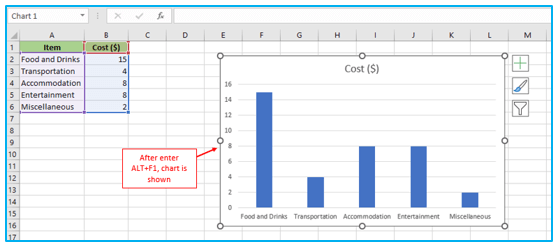
In Excel, pressing the keyboard shortcut Alt+Shift+F1 performs the action of inserting a new worksheet into the workbook. This can be a useful function when you need to add new data or information to your spreadsheet, or when you need to organize your data across multiple sheets. The new worksheet is inserted to the left of the active worksheet and is named with a default name such as Sheet1, Sheet2, and so on.
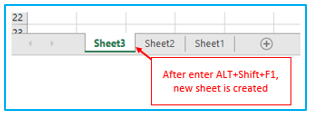
F2 Key:
Firstly, if a cell is selected, pressing F2 allows you to edit its contents and places the insertion point at the end of the text. If the cell’s editing is turned off, pressing F2 moves the insertion point to the formula bar, allowing you to modify the cell’s formula. Additionally, if you are already editing a formula, pressing F2 toggles Point mode on or off, enabling you to use the arrow keys to create a reference.

Alternatively, pressing Shift+F2 enables you to add or edit a cell comment. This can be useful for adding notes or explanations to your spreadsheet, or for collaborating others.
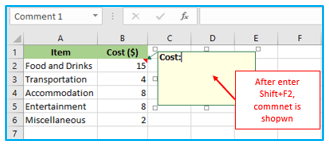
Finally, pressing Ctrl+F2 displays the print preview area on the Print tab in the Backstage view. This allows you to preview your document before printing, which can help you ensure that the document is formatted correctly and avoid printing errors.
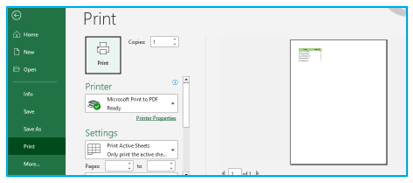
F3 Key:
In Excel, pressing the F3 key displays the “Paste Name” dialog box, but only if there are names defined in the workbook. This dialog box allows you to select a specific name and paste it into the currently selected cell or formula. This can be a useful feature when you have a large spreadsheet with many named cells, and you need to quickly reference them.
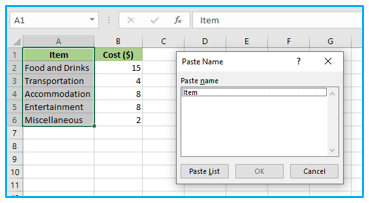
Pressing Shift+F3 opens the “Insert Function” dialog box, which is a powerful tool for adding built-in or custom functions to your formulas. This dialog box allows you to search for and select a specific function, as well as provide arguments and parameters to customize the function to your specific needs. This can be particularly useful when you need to perform complex calculations or data manipulations in your spreadsheet.
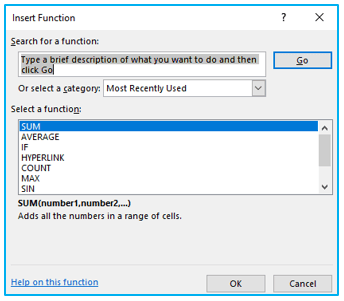
F4 Key:
When working with formulas in Excel, you may need to lock cell references to prevent them from changing when you copy or fill the formula to other cells. The dollar sign is used to indicate an absolute reference, and it can be added to a cell reference by pressing the F4 key.
By pressing F4 repeatedly, you can toggle through the different absolute reference options available in Excel, including locking the column or row of a cell, or both. This can be a useful feature when you want to ensure that specific cells remain constant in your formulas, regardless of where the formula is copied or moved within your spreadsheet.
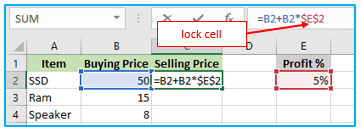
F5 Key:
The “Go To” dialog box, which lets you swiftly move to a particular cell or range of cells within your spreadsheet, is displayed when you press F5. This can be a useful feature when working with large or complex spreadsheets, as it saves time by avoiding the need to scroll or search manually.
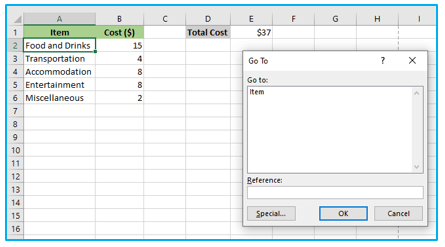
Alternatively, pressing Ctrl+F5 restores the window size of the currently selected workbook window. This can be a useful feature when you have resized or minimized a window and need to quickly restore it to its original size. It can help you manage your workspace and avoid clutter, making it easier to focus on your work.
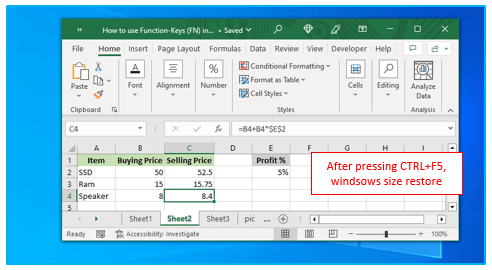
F6 Key:
Pressing F6 allows you to switch between the worksheet, ribbon, task pane, and Zoom controls. If the worksheet has been split, F6 also includes the split panes when switching between panes and the ribbon area.
On the other hand, pressing Shift+F6 allows you to switch between the worksheet, Zoom controls, task pane, and ribbon, in a slightly different order than F6.
Finally, pressing Ctrl+F6 is useful when you have multiple workbook windows open, allowing you to quickly switch to the next workbook window. This can be a time-saving feature when you need to work on different worksheets or spreadsheets simultaneously.

F7 Key:
Pressing F7 opens the Spelling dialog box, which allows you to check the spelling of words in the active worksheet or selected range. This can be a useful feature when you need to ensure that your spreadsheet is error-free and professional-looking.
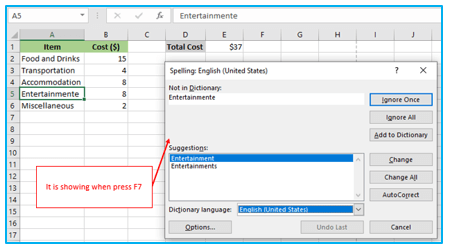
When the workbook window is not maximized, hitting the keys Ctrl and F7 causes the Move command to be executed. This allows you to move the window around the screen using the arrow keys, which can be useful if you need to rearrange your workspace or adjust the layout of your windows. Once you have finished moving the window, you can press Enter to confirm the new position or Esc to cancel the move.
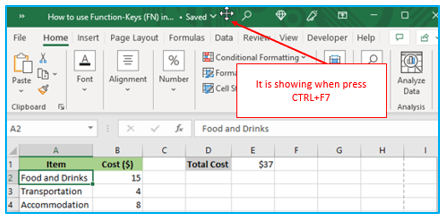
F8 Key:
Pressing F8 turns on or off extend mode, which allows you to extend the selection of cells using the arrow keys. When in extend mode, you will see “Extended Selection” appear in the status line.
Alternatively, pressing Shift+F8 enables you to add a nonadjacent cell or range to a selection of cells by using the arrow keys. This can be a useful feature when you need to select multiple cells or ranges that are not next to each other.

Pressing Alt+F8 displays the Macro dialog box, which allows you to create, run, edit, or delete a macro. Macros are useful for automating repetitive tasks in Excel, and the Macro dialog box provides a convenient interface for managing them.
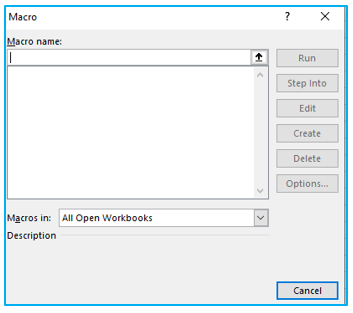
F9 Key:
Pressing the F9 key in Excel triggers the calculation process for all worksheets in all open workbooks. This means that any formulas or functions that are dependent on other cells will be recalculated based on the updated values. This can be a useful feature when you want to ensure that all your data is up-to-date and accurate.

F10 Key:
Pressing the F10 key in Excel allows you to toggle the Key Tips feature on or off. This feature provides a quick way to access different commands and options using the keyboard, by displaying small labels with shortcut keys.

If you prefer to use your mouse, you can also use the Shift+F10 keyboard shortcut to display the context menu for a selected item. This menu includes a list of available commands and options that are specific to the selected item.
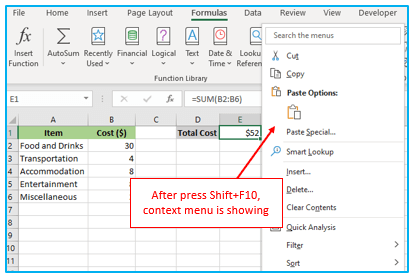
Pressing Ctrl+F10 maximizes or restores the selected workbook window. This can be a useful feature when you want to view your data in full screen mode or need to access other applications or files on your computer.
F11 Key:
Pressing the F11 key in Excel creates a new chart sheet with a chart of the data in the current range. This can be a quick and easy way to visualize your data and identify trends or patterns.
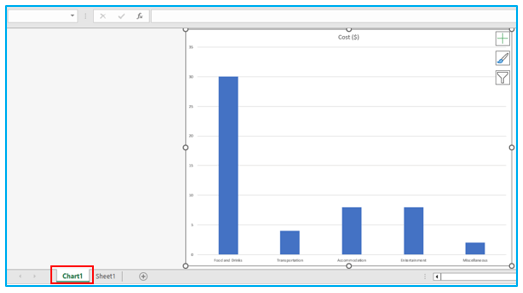
Alternatively, you can use the Shift+F11 keyboard shortcut to insert a new worksheet into the current workbook. This can be useful when you need to add additional data or calculations to your workbook.
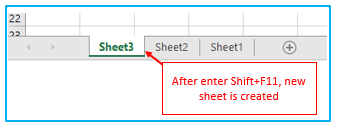
If you want to create more advanced macros or automate repetitive tasks, you can use the Alt+F11 keyboard shortcut to open the Microsoft Visual Basic for Applications (VBA) Editor. This powerful tool allows you to write custom code using the VBA programming language, which can be used to automate a wide variety of tasks in Excel.
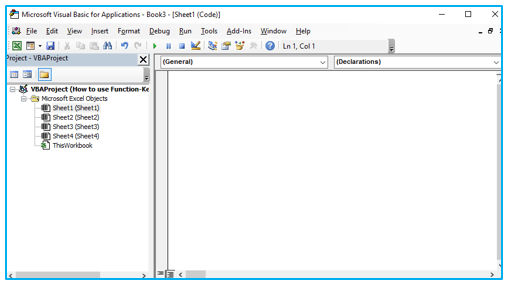
F12 Key:
Pressing the F12 key in Excel opens the Save As dialog box, allowing you to save the current workbook with a new file name, location, or file format. This can be useful when you need to create a copy of your workbook, save it in a different location, or save it in a different file format such as CSV, PDF, or XPS.
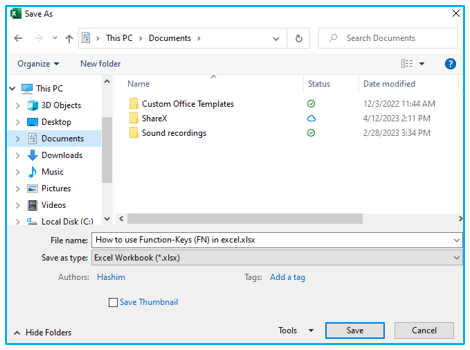
Application of Function Keys (FN) in Excel
- Navigate Worksheets: Use Function Keys (FN) in Excel to quickly navigate between worksheets, enhancing efficiency when working with multiple tabs.
- Execute Commands: Employ Function Keys (FN) to execute commands such as copy, paste, and save, streamlining common tasks and saving time.
- Toggle Editing Modes: Use Function Keys (FN) to toggle between editing modes like cell editing and formula editing, improving workflow flexibility.
- Access Ribbon Commands: Utilize Function Keys (FN) to access commands on the ribbon, providing shortcuts for various formatting and data manipulation tasks.
- Insert Functions: Use Function Keys (FN) in combination with other keys to insert frequently used functions, speeding up formula creation and analysis.
- Toggle Full Screen Mode: Employ Function Keys (FN) to toggle full-screen mode, maximizing screen real estate for easier data viewing and manipulation.
For ready-to-use Dashboard Templates:
